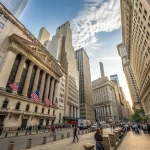Banks are signaling a shift in confidence, with management teams preparing to return more cash to investors through dividends and buybacks. The change reflects stronger capital cushions, steadier earnings, and a clearer view of credit risks after recent economic shocks. While timing and size vary by institution, the trend suggests a new phase in the sector’s recovery and strategy.
The move is drawing attention from regulators, investors, and policy groups. Supporters see proof of healthier balance sheets. Critics warn that higher payouts could reduce reserves if the economy slows. Decisions made in the next quarter will set the tone for the rest of the year.
Why Payouts Are Rising
Bank executives often adjust capital plans as loan losses, funding costs, and fee income become more predictable. Net interest income has cooled from recent highs, but fee businesses in payments, wealth, and cards remain resilient. With core profitability holding, banks are once again weighing how much excess capital they need.
“Banks are growing more comfortable returning profits to their shareholders.”
That sentiment reflects improved visibility on capital requirements and stress outcomes. When uncertainty fades, boards find it easier to authorize buybacks or raise dividends. Many firms also aim to align payout levels with stated long-term targets, signaling discipline to the market.
Regulatory and Economic Backdrop
Supervisory tests and evolving capital rules remain central. Annual stress assessments by U.S. regulators influence how much capital banks can safely release. Firms with strong results often boost buybacks, while those with tighter cushions opt for smaller dividend increases or none at all.
The broader economy factors in. A stable job market and contained credit losses support higher payouts. Rising funding costs and slower loan demand, however, encourage selectivity. Banks are balancing returns to shareholders with investments in risk controls, technology, and compliance as rulemaking advances, including planned adjustments to capital standards.
Investor Reaction and Market Impact
Investors typically favor predictable, growing dividends and opportunistic buybacks when shares trade below book value. Higher payouts can lift valuations by signaling management confidence. Yet, some long-term holders prefer banks to preserve capital when credit conditions are uncertain.
Community groups and small-business advocates raise a different point. They argue that channeling more profits to shareholders may limit lending capacity or cut into services. Bank leaders counter that efficient capital use and steady dividends help fund growth by keeping funding costs in check and retaining investor support.
What Banks Are Weighing Now
Boards are reviewing capital plans with an eye on several variables:
- Regulatory buffers required under stress scenarios.
- Trends in credit quality across cards, autos, and commercial real estate.
- Deposit stability and funding costs.
- Share valuation versus book value and earnings outlook.
- Opportunities for technology investment and branch optimization.
If economic data hold steady and regulators finalize rules with clear timelines, more firms could approve larger buybacks. If credit losses rise or funding costs stay high, boards may favor smaller dividend bumps or pause repurchases.
Signals To Watch
Upcoming earnings will show how banks are managing expenses and credit. Commentary on net interest margins and deposit mix will guide payout expectations. Capital ratios, including common equity tier 1 levels, will be closely watched after supervisory assessments. Share buyback authorizations and dividend declarations will provide the clearest proof of the shift.
Banks appear readier to share profits after a period of restraint. The next few months will test whether improved confidence can withstand mixed economic signals and evolving rules. For investors, the key takeaways are simple: watch the strength of capital, the path of credit costs, and the size of announced buybacks and dividends. A steady environment should support higher payouts, while a weaker economy or stricter requirements could slow the pace. Either way, capital planning is back at the center of bank strategy—and shareholder returns are moving up the agenda.







